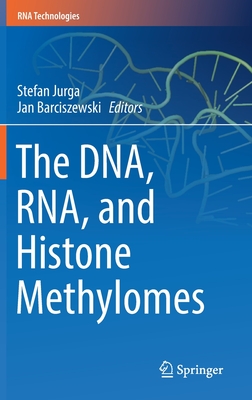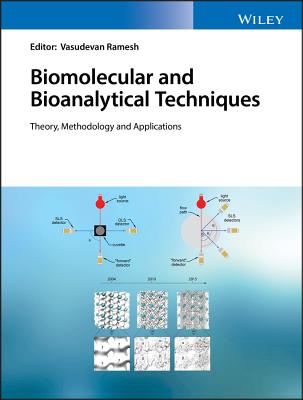買這商品的人也買了...
-
 Computer Organization & Design: The Hardware/Software Interface, 2/e
Computer Organization & Design: The Hardware/Software Interface, 2/e$1,200$1,176 -
 SQL Server 2000 管理實務
SQL Server 2000 管理實務$680$537 -
 專業 PHP4 程式設計 (Professional PHP4)
專業 PHP4 程式設計 (Professional PHP4)$680$537 -
 用實例學 ASP.NET 使用 C# 與 ADO.NET
用實例學 ASP.NET 使用 C# 與 ADO.NET$600$474 -
 資料結構-使用 C 語言 (Fundamentals of Data Structures in C)
資料結構-使用 C 語言 (Fundamentals of Data Structures in C)$450$356 -
 Visual C# 教學手冊 (Beginning Visual C#)
Visual C# 教學手冊 (Beginning Visual C#)$680$537 -
 ASP.NET 程式設計徹底研究
ASP.NET 程式設計徹底研究$590$466 -
 精通 Visual Basic.NET 中文版黑皮書 (Visual Basic.NET Black Book)
精通 Visual Basic.NET 中文版黑皮書 (Visual Basic.NET Black Book)$750$585 -
 鳥哥的 Linux 私房菜-伺服器架設篇
鳥哥的 Linux 私房菜-伺服器架設篇$750$638 -
 鳥哥的 Linux 私房菜─基礎學習篇增訂版
鳥哥的 Linux 私房菜─基礎學習篇增訂版$560$476 -
 軟體工程實務:系統分析、設計與測試 (Software Engineering in Practical)
軟體工程實務:系統分析、設計與測試 (Software Engineering in Practical)$420$328 -
 Linux 與 Windows 共舞─異質平台整合方案
Linux 與 Windows 共舞─異質平台整合方案$650$514 -
 Eclipse 實作手冊─活用 Java 整合開發環境 (Eclipse in Action: A Guide for the Java Developer)
Eclipse 實作手冊─活用 Java 整合開發環境 (Eclipse in Action: A Guide for the Java Developer)$450$351 -
 SCJP‧SCJD 專業認證指南 (Sun Certified Programmer & Developer for Java 2 #310-305 與310-027)
SCJP‧SCJD 專業認證指南 (Sun Certified Programmer & Developer for Java 2 #310-305 與310-027)$850$723 -
 精彩 Dreamweaver MX 2004 動態網站 for ASP.NET
精彩 Dreamweaver MX 2004 動態網站 for ASP.NET$550$468 -
 人月神話:軟體專案管理之道 (20 週年紀念版)(The Mythical Man-Month: Essays on Software Engineering, Anniversary Edition, 2/e)
人月神話:軟體專案管理之道 (20 週年紀念版)(The Mythical Man-Month: Essays on Software Engineering, Anniversary Edition, 2/e)$480$379 -
 JSP 2.0 技術手冊
JSP 2.0 技術手冊$750$593 -
 Linux 網路管理實務: 調校、帳號、監控、安全
Linux 網路管理實務: 調校、帳號、監控、安全$580$458 -
 C 程式設計藝術 (C How to Program, 4/e)
C 程式設計藝術 (C How to Program, 4/e)$780$702 -
 Embedded Linux 嵌入式系統原理與實務, 2e
Embedded Linux 嵌入式系統原理與實務, 2e$760$646 -
 Project 2003 高手攻略
Project 2003 高手攻略$560$442 -
 密碼學與網路安全-原理與實務 (Cryptography and Network Security: Principles and Practices, 3/e)
密碼學與網路安全-原理與實務 (Cryptography and Network Security: Principles and Practices, 3/e)$680$537 -
 Java Web Services 實務程式設計
Java Web Services 實務程式設計$520$411 -
 Fedora Core 2 Linux 實務應用
Fedora Core 2 Linux 實務應用$650$514 -
 最新 JavaScript 完整語法參考辭典 第三版
最新 JavaScript 完整語法參考辭典 第三版$490$382
商品描述
Bionanotechnology: Lessons from Nature shows both students and practitioners how the lessons that may be learned from biology can be applied to nanotechnology today. The first part of the book explores the properties of nanomachines that are available in cells. The second looks to the structure and function of natural nanomachines for guidance in building nanomachinery.
The book then concludes with chapters on applications, surveying some of the exciting bionanotechnological tools and techniques that are currently in development, and speculating on those that may prove feasible in the not-too-distant future. Features of this one-of-a-kind reference include:
- High-quality illustrations produced by cutting-edge design programs
- Discussions of basic structural, nanotechnological, and system engineering principles
- Numerous real-world examples, such as applications in genetic engineering
Undergraduates, graduate students, practicing researchers, and policymakers will find David Goodsell’s Bionanotechnology an accessible, visually compelling introduction to this exciting field.
Table of Contents:
1. The Quest for Nanotechnology.
Biotechnology and the Two-Week Revolution.
From Biotechnology to Bionanotechnology.
What is Bionanotechnology?
2. Bionanomachines in Action.
The Unfamiliar World of Bionanomachines.
Gravity and Inertia are Negligible at the Nanoscale.
Nanomachines Show Atomic Granularity.
Thermal Motion is a Significant Force at the Nanoscale.
Bionanomachines Require a Water Environment.
Modern Biomaterials.
Most Natural Bionanomachines are Composed of Protein.
Nucleic Acids Carry Information.
Lipids are Used for Infrastructure.
Polysaccharides are Used in Specialized Structural Roles.
The Legacy of Evolution.
Evolution has Placed Significant Limitations on the Properties of Natural Biomolecules.
Guided Tours of Natural Bionanomachinery.
3. Biomolecular Design and Biotechnology.
Recombinant DNA Technology.
DNA may be Engineered with Commercially Available Enzymes.
Site-Directed Mutagenesis makes Specific Changes in the Genome.
Fusion Proteins Combine Two Functions.
Monoclonal Antibodies.
Biomolecular Structure Determination.
X-ray Crystallography Provides Atomic Structures.
NMR Spectroscopy may be Used to Derive Atomic Structures.
Electron Microscopy Reveals Molecular Morphology.
Atomic Force Microscopy Probes the Surface of Biomolecules.
Molecular Modeling.
Bionanomachines are Visualized with Computer Graphics.
Computer Modeling is Used to Predict Biomolecular Structure and Function.
The Protein Folding Problem.
Docking Simulations Predict the Modes of Biomolecular Interaction.
New Functionalities are Developed with Computer-Assisted Molecular Design.
4. Structural Principles of Bionanotechnology.
Natural Bionanomachinery is Designed for a Specific Environment.
A Hierarchical Strategy Allows Construction of Nanomachines.
The Raw Materials: Biomolecular Structure and Stability.
Molecules are Composed of Atoms Linked by Covalent Bonds.
Dispersion and Repulsion Forces Act at Close Range.
Hydrogen Bonds Provide Stability and Specificity.
Electrostatic Interactions are Formed Between Charged Atoms.
The Hydrophobic Effect Stabilizes Biomolecules in Water.
Protein Folding.
Not All Protein Sequences Adopt Stable Structures.
Globular Proteins have a Hierarchical Structure.
Stable Globular Structure Requires a Combination of Design Strategies.
Chaperones Provide the Optimal Environment for Folding.
Rigidity Can Make Proteins More Stable at High Temperatures.
Many Proteins Make Use of Disorder.
Self-Assembly.
Symmetry Allows Self-Assembly of Stable Complexes with Defined Size.
Quasisymmetry is Used to Build Assemblies too Large for Perfect Symmetry.
Crowded Conditions Promote Self-Assembly.
Self-Organization.
Lipids Self-Organize into Bilayers.
Lipid Bilayers are Fluid.
Proteins May be Designed to Self-Organize with Lipid Bilayers.
Molecular Recognition.
Crane Principles for Molecular Recognition.
Atomicity Limits the Tolerance of Combining Sites.
Flexibility.
Biomolecules Show Flexibility at All Levels.
Flexibility Poses Great Challenges for the Design of Bionanomachines.
5. Functional Principles of Bionanotechnology.
Information-Driven Nanoassembly.
Nucleic Acids Carry Genetic Information.
Ribosomes Construct Proteins.
Information is Stored in Very Compact Form.
Energetics.
Chemical Energy is Transferred by Carrier Molecules.
Light is Captured with Specialized Small Molecules.
Protein Pathways Transfer Single Electrons.
Electrical Conduction and Change Transfer have Been Observed in DNA.
Electrochemical Gradients are Created across Membranes.
Chemical Transformation.
Enzymes Reduce the Entropy of a Chemical Reaction.
Enzymes Create Environments that Stabilize Transition States.
Enzymes Use Chemical Tools to Perform a Reaction.
Regulation.
Protein Activity May be Regulated through Allosteric Motions.
Protein Action May be Regulated by Covalent Modification.
Biomaterials.
Helical Assembly of Subunits Forms Filaments and Fibrils.
Microscale Infractures is Built from Fibrous Components.
Minerals are Combined with Biomaterials for Special Applications.
Elastic Proteins Use Disordered Chains.
Cells Make Specific and General Adhesives.
Biomolecular Motors.
ATP Powers Linear Motors.
ATP Synthase and Flagellar Motors are Rotary Motors.
Brownian Ratchets Rectify Random Thermal Motions.
Traffic Across Membranes.
Potassium Channels Use a Selectivity Filter.
ABC Transporters Use a Flip-Flop Mechanism.
Bacteriorhodopsin Uses Light to Pump Protons.
Biomolecular Sensing.
Smell and Taste Detect Specific Molecules.
Light is Sensed by Monitoring Light-Sensitive Motions in Retinal.
Mechanosensory Receptors Sense Motion Across a Membrane.
Bacteria Sense Chemical Gradients by Rectification of Random Motion.
Self-Replication.
Cells are Autonomous Self-Replicators.
The Basic Design of Cells is Shaped by the Processes of Evolution.
Machine-Phase Bionanotechnology.
Muscle Sarcomeres.
Nerves.
6. Bionanotechnology Today.
Basic Capabilities.
Natural Proteins May be Simplified.
Proteins are Being Designed from Scratch.
Proteins May be Constructed with Nonnatural Amino Acids.
Peptide Nucleic Acids Provide a Stable Alternative to DNA and RNA.
Nanomedicine Today.
Computer-Aided Drug has Produced Effective Anti-AIDS Drugs.
Immunotoxins are Targeted Cell Killers.
Drugs May be Delivered with Liposomes.
Artificial Blood Saves Lives.
Gene Therapy will Correct Genetic Defects.
General Medicine is Changing into Personalized Medicine.
Self-Assembly at Many Scales.
Self-Assembling DNA Scaffolds have Been Constructed.
Cyclic Peptides Form Nanotubes.
Fusion Proteins Self-Assemble into Extended Structures.
Small Organic Molecules Self-Assemble into Large Structures.
Larger Objects May be Self-Assembled.
Harnessing Molecular Motors.
ATP Synthase is Used as a Rotary Motor.
Molecular Machines have Been Built of DNA.
DNA Computers.
The First DNA Computer Solved a Traveling Salesman Problem.
Satisfiability Problems are Solved by DNA Computing.
A Turning Machine has Been Built with DNA.
Molecular Design Using Biological Selection.
Antibodies May be Turned into Enzymes.
Peptides May be Screened with Bacteriophage Display Libraries.
Nucleic Acids with Novel Functions May be Selected.
Functional Bionanomachines are Surprisingly Common.
Artificial Life.
Artificial Protocells Reproduce by Budding.
Self-Replicating Molecules are in Elusive Goal.
ATP is Made with an Artificial Photosynthetic Liposome.
Poliovirus has Been Created with Only a Genetic Blueprint.
Hybrid Materials.
Nanoscale Conductive Metal Wires May be Constructed with DNA.
Patterned Aggregates of Gold Nanoparticles are Formed with DNA.
DNA Flexes a Sensitive Mechanical Lever.
Researchers are Harnessing Biomineralization.
Biosensors.
Antibodies are Widely Used as Biosensors.
Biosensors Detect Glucose Levels for Management of Diabetes.
Engineered Nanopores Detect Specific DNA Sequences.
7. The Future of Bionanotechnology.
A Timetable for Bionanotechnology.
Lessons for Molecular Nanotechnology.
Three Case Studies.
Case Study: Nanotube Synthase.
Case Study: A General Nanoscale Assembler.
Case Study: Nanosurveillance.
Ethical Considerations.
Respect for Life.
Potential Dangers.
Final Thoughts.
Literature.
Sources.
Index.
商品描述(中文翻譯)
生物分子本身就是納米技術可行性和實用性的首要、經過驗證的範例——實際上,這是「來自自然的教訓」,指導納米級機器的設計。生物納米技術涵蓋了結構分子生物學與分子納米技術之間的聯繫的研究、創造和闡明。這本書是首部全面且專門探討此學科的資源,《生物納米技術:來自自然的教訓》提供了一個易於理解的概述,並附有作者精美的原創水彩插圖。
《生物納米技術:來自自然的教訓》向學生和從業者展示了如何將生物學中可以學到的教訓應用於當今的納米技術。書的第一部分探討了細胞中可用的納米機器的特性。第二部分則尋求自然納米機器的結構和功能,以指導納米機械的建造。
本書最後以應用章節作結,調查一些當前正在開發的令人興奮的生物納米技術工具和技術,並推測那些在不久的將來可能實現的技術。這本獨特的參考書的特點包括:
- 由尖端設計程序製作的高品質插圖
- 基本結構、納米技術和系統工程原則的討論
- 許多現實世界的例子,例如基因工程中的應用
本科生、研究生、實踐研究者和政策制定者將會發現大衛·古德塞爾的《生物納米技術》是這一激動人心領域的易讀且視覺引人入勝的介紹。
目錄:
1. 尋求納米技術。
生物技術與兩週革命。
從生物技術到生物納米技術。
什麼是生物納米技術?
2. 生物納米機器的運作。
生物納米機器的陌生世界。
在納米尺度上,重力和慣性可以忽略不計。
納米機器顯示出原子顆粒性。
熱運動在納米尺度上是一種重要的力量。
生物納米機器需要水環境。
現代生物材料。
大多數自然生物納米機器由蛋白質組成。
核酸攜帶信息。
脂質用於基礎設施。
多醣類用於專門的結構角色。
演化的遺產。
演化對自然生物分子的特性施加了重大限制。
自然生物納米機械的導覽。
3. 生物分子設計與生物技術。
重組DNA技術。
DNA可以用商業可得的酶進行工程改造。
定點突變使基因組中進行特定改變。
融合蛋白結合兩種功能。
單克隆抗體。
生物分子結構確定。
X射線晶體學提供原子結構。
NMR光譜學可用於推導原子結構。
電子顯微鏡揭示分子形態。
原子力顯微鏡探測生物分子的表面。
分子建模。
生物納米機器用計算機圖形可視化。
計算機建模用於預測生物分子的結構和功能。
蛋白質摺疊問題。
對接模擬預測生物分子相互作用的模式。
新功能通過計算機輔助分子設計開發。
4. 生物納米技術的結構原則。
自然生物納米機械是為特定環境設計的。
分層策略允許建造納米機器。
原材料:生物分子的結構和穩定性。
分子由通過共價鍵連接的原子組成。
在近距離作用的有色散和排斥力。
氫鍵提供穩定性和特異性。
帶電原子之間形成靜電相互作用。
疏水效應在水中穩定生物分子。
蛋白質摺疊。
並非所有蛋白質序列都採用穩定結構。
球狀蛋白具有分層結構。
穩定的球狀結構需要多種設計策略的結合。
伴護蛋白提供最佳的摺疊環境。
剛性可以使蛋白質在高溫下更穩定。
許多蛋白質利用無序。
自組裝。
對稱允許自組裝具有定義大小的穩定複合物。
準對稱用於構建過大而無法完美對稱的組合。
擁擠的條件促進自組裝。
自我組織。
脂質自我組織成雙層。
脂質雙層是流動的。
蛋白質可以設計為與脂質雙層自我組織。
分子識別。
分子識別的起重機原則。
原子性限制了結合位點的容忍度。
靈活性。
生物分子在所有層面上顯示出靈活性。
靈活性對生物納米機器的設計提出了巨大挑戰。
5. 生物納米技術的功能原則。
信息驅動的納米組裝。
核酸攜帶遺傳信息。
核糖體構建蛋白質。
信息以非常緊湊的形式存儲。
能量學。
化學能由載體分子轉移。
光被專門的小分子捕獲。
蛋白質通道轉移單個電子。
在DNA中觀察到電導和變化轉移。
跨膜創建電化學梯度。
化學轉化。
酶降低化學反應的熵。
酶創造穩定過渡狀態的環境。
酶使用化學工具執行反應。
調節。
蛋白質活性可以通過變構運動進行調節。
蛋白質作用可以通過共價修飾進行調節。
生物材料。
螺旋組裝的亞單元形成纖維和纖維狀物質。
微觀結構由纖維組件構成。
礦物與生物材料結合以用於特殊應用。
彈性蛋白使用無序鏈。
細胞製造特定和一般的粘合劑。
生物分子馬達。
ATP驅動線性馬達。
ATP合成酶和鞭毛馬達是旋轉馬達。
布朗運動齒輪整流隨機熱運動。
跨膜交通。
鉀通道使用選擇性過濾器。
ABC運輸蛋白使用翻轉機制。
細菌視紫紅質利用光來泵送質子。
生物分子感測。
嗅覺和味覺檢測特定分子。
通過監測視網膜中的光敏運動來感知光。
機械感受器感知跨膜運動。
細菌通過整流隨機運動來感知化學梯度。
自我複製。
細胞是自主的自我複製者。
細胞的基本設計受到演化過程的影響。
機器階段的生物納米技術。
肌肉肌節。
神經。
6. 當今的生物納米技術。
基本能力。
自然蛋白質可以簡化。
蛋白質正在從零開始設計。
蛋白質可以用非自然氨基酸構建。
肽核酸提供穩定的DNA和RNA替代品。
當今的納米醫學。
計算機輔助藥物已產生有效的抗艾滋病藥物。
免疫毒素是針對細胞的殺手。
藥物可以通過脂質體傳遞。
人工血液拯救生命。
基因療法將修正遺傳缺陷。
一般醫學正在轉變為個性化醫學。
多尺度的自組裝。
自組裝的DNA支架已被構建。
環狀肽形成納米管。
融合蛋白自組裝成擴展結構。
小有機分子自組裝成大型結構。
更大的物體可以自組裝。
利用分子馬達。
ATP合成酶用作旋轉馬達。
分子機器已用DNA構建。
DNA計算機。
第一個DNA計算機解決了旅行推銷員問題。
可滿足性問題由DNA計算解決。
一台圖靈機已用DNA構建。
使用生物選擇的分子設計。
抗體可以轉化為酶。
肽可以用噬菌體展示文庫進行篩選。
具有新功能的核酸可以被選擇。
功能性生物納米機器出乎意料地普遍。
人工生命。
人工原細胞通過出芽繁殖。
自我複製的分子是一個難以捉摸的目標。
ATP是用人工光合脂質體製造的。
脊髓病毒僅用基因藍圖創建。
混合材料。
可以用DNA構建納米級導電金屬線。
用DNA形成的金納米粒子圖案聚集物。
DNA彎曲一個敏感的機械杠杆。
研究人員正在利用生物礦化。
生物感測器。
抗體被廣泛用作生物感測器。
生物感測器檢測葡萄糖水平以管理糖尿病。
工程納米孔檢測特定DNA序列。
7. 生物納米技術的未來。
生物納米技術的時間表。
分子納米技術的教訓。
三個案例研究。
案例研究:納米管合成酶。
案例研究:通用納米級組裝機。
案例研究:納米監控。
道德考量。
尊重生命。
潛在危險。
最後的思考。
文獻。
來源。
索引。



















